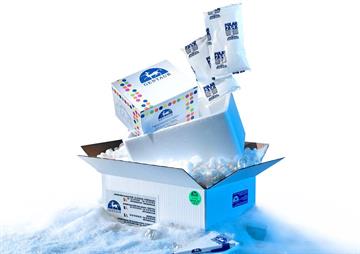Anti-Human MIS Antibody

Anti-Human MIS Antibody
748.5 EUR
In Stock
quantity
Produktdetaljer
Katalognummer: 209 - 101-M572
Produktkategori: Företag och industri > Vetenskap och laboratorium
ReliaTechGentaur
Storlek: 100 µg
Related Products
101-M572
Anti-Human MIS Antibody
Müllerian inhibiting substance (MIS), also named antiMüllerian hormone (AMH), is a tissuespecific TGFβ superfamily growth factor. Its expression is restricted to the Sertoli cells of fetal and postnatal testis, and to the granulosa cells of postnatal ovary. The human MIS gene encodes a 553 amino acid residue (aa) prepropeptide containing a signal a sequence (1-24), a proregion (25-455), and the carboxylterminal bioactive protein (446-553). MIS is synthesized and secreted as a disulfidelinked homodimeric proprotein. Proteolytic cleavage is required to generate the Nterminal pro region and the C-terminal bioactive protein, which remain associated in a noncovalent complex. Recombinant C-terminal MIS has been shown to be bioactive. However, the complex with the N-terminal pro region showed enhanced activity. The Cterminal region contains the seven canonical cysteine residues found in TGF-β superfamily members. These cysteine residues are involved in interand intramolecular disulfide bonds, which forms the cysteine knot structure. Human and mouse MIS share 73% and 90% aa sequence identity in their pro region and Cterminal region, respectively. MIS induces Mullerian duct (female reproductive tract) regression during sexual differentiation in the male embryo. Posnatally, MIS has been shown to regulate gonadal functions. MIS inhibits Leydig cell proliferation and is a regulator of the initial and cyclic recruitment of ovarian follicles. MIS has also been found to have antiproliferative effects on breast, ovarian and prostate tumor cells.
748.5 €
101-M697
Anti-Human uPA Antibody
u-Plasminogen Activator (uPA) is a serine protease that converts plasminogen to plasmin, with roles in a variety of normal and pathological processes that include cell migration and tissue destruction. uPA is a potent marker of invasion and metastasis in a variety of human cancers including breast, stomach, colon, bladder, ovarian, brain, and endometrium.
748.5 €
101-M707
Anti-Human FAS Antibody
Fas, also known as APO1, CD95, and TNFRSF6, was originally identified as a cellsurface protein which binds to monoclonal antibodies that were cytolytic for various human cell lines. In the new TNF Receptor superfamily nomenclature, Fas is referred to as TNFRSF6. Human Fas cDNA encodes a 325 amino acid (aa) residue type 1 membrane protein that belongs to the TNF and NGF receptor family. Alternatively spliced cDNAs encoding multiple Fas isoforms, including a soluble form of Fas lacking the transmembrane domain, have also been identified. Fas is highly expressed in epithelial cells, hepatocytes, activated mature lymphocytes, virus-transformed lymphocytes, and other tumor cells. Fas expression has also been detected in mouse thymus, liver, heart, lung, kidney and ovary. The ligand for Fas (FasL) has been identified and shown to be a member of the TNF family of type 2 membrane proteins. Fas-L is predominantly expressed by activated Tlymphocytes, NK cells, and in tissues with immuneprivileged sites. Soluble Fas-L can be produced by proteolysis of membrane-associated Fas.
748.5 €
101-M73
Anti-Human LEC Antibody
LEC is a CC chemokine that can signal through the CCR8 and CCR1 receptors. It is expressed in the liver, spleen, and thymus. LEC is chemotactic towards monocytes and lymphocytes but not neutrophils. Recombinant human LEC is an 11.2 kDa protein containing 97 amino acid residues, including the four conserved cysteine residues present in CC chemokines.
520.12 €
Håll dig uppdaterad! Visa tidigare publikationer

By: Author , 2 Comment
Anaplasmos hos hundar och katter – allt du behöver veta
23 August 2025

By: Author , 2 Comment
Solbränna – hur leker man säkert i solen?
16 August 2025

By: Author , 2 Comment
Biologiska läkemedel – Modernitet inom farmaci
1 August 2025

By: Author , 2 Comment
Icke-steroida antiinflammatoriska läkemedel – viktig information om populära läkemedel
22 July 2025








